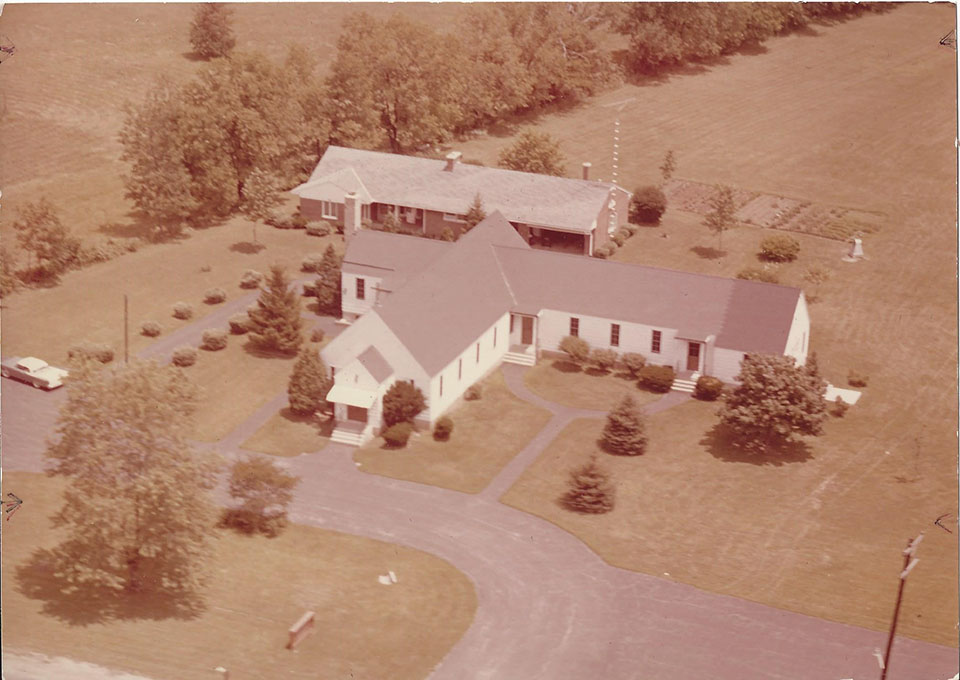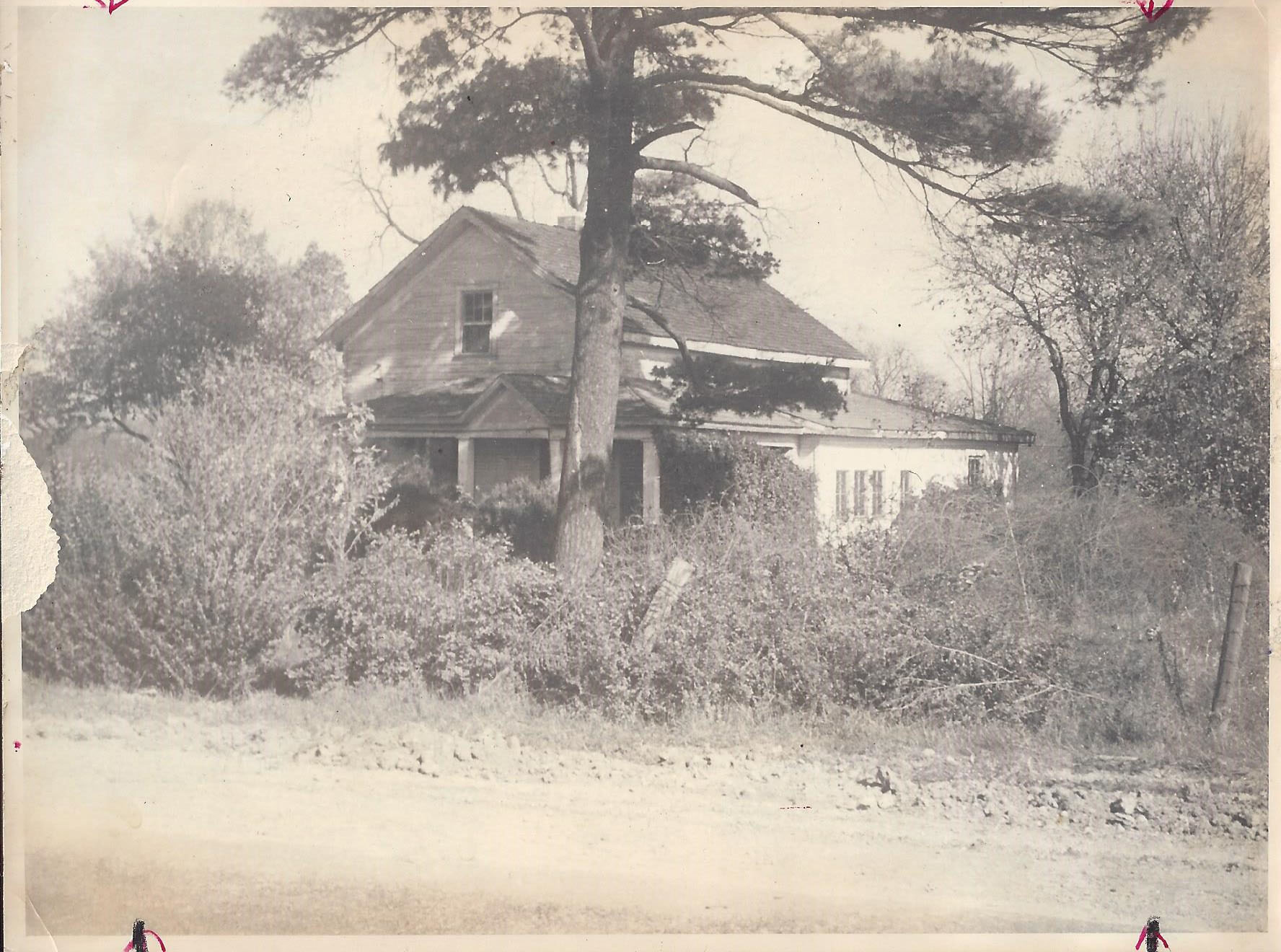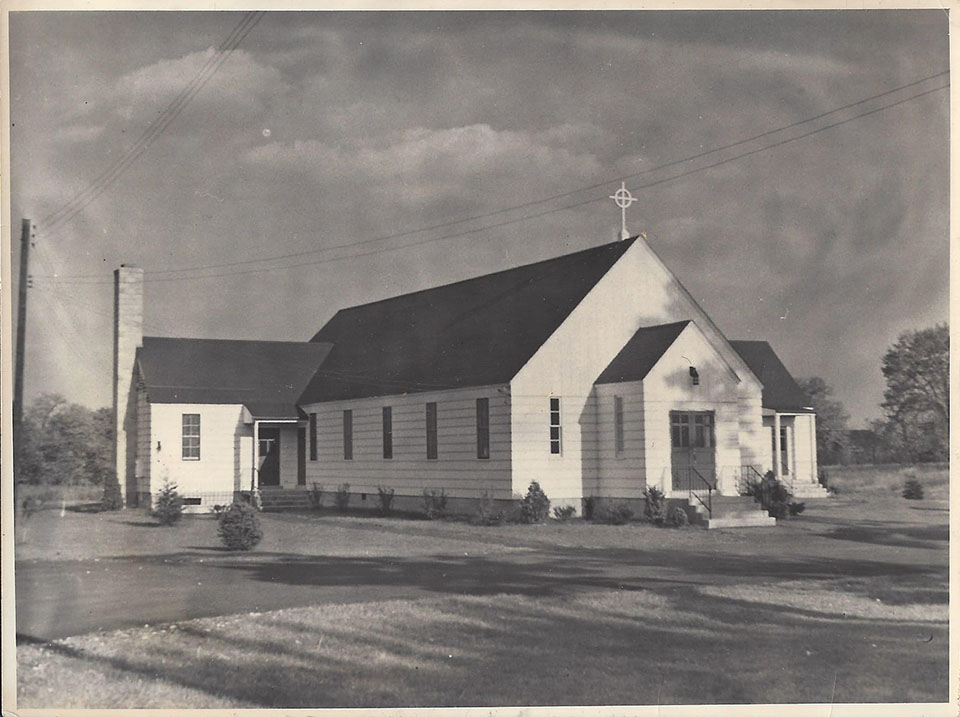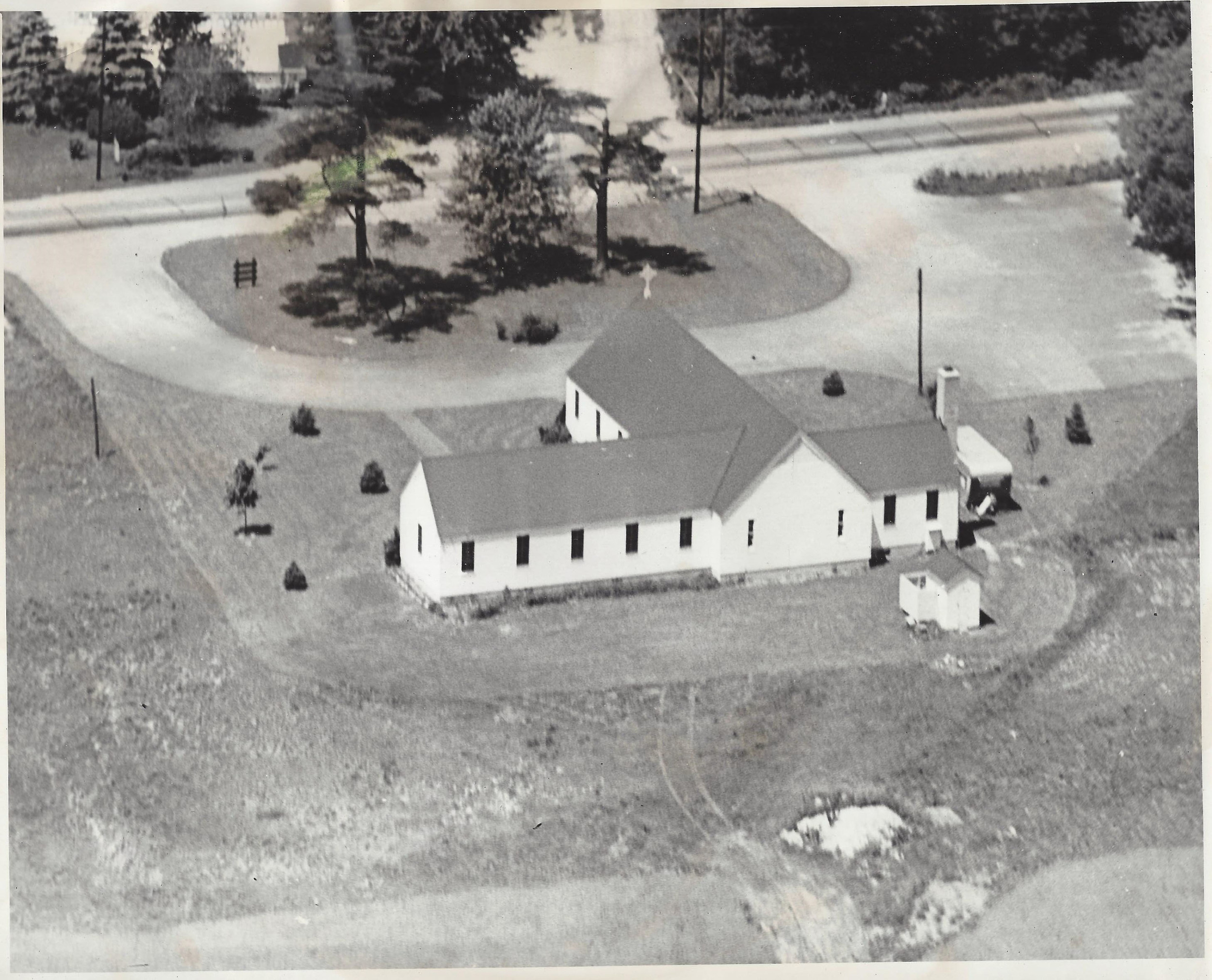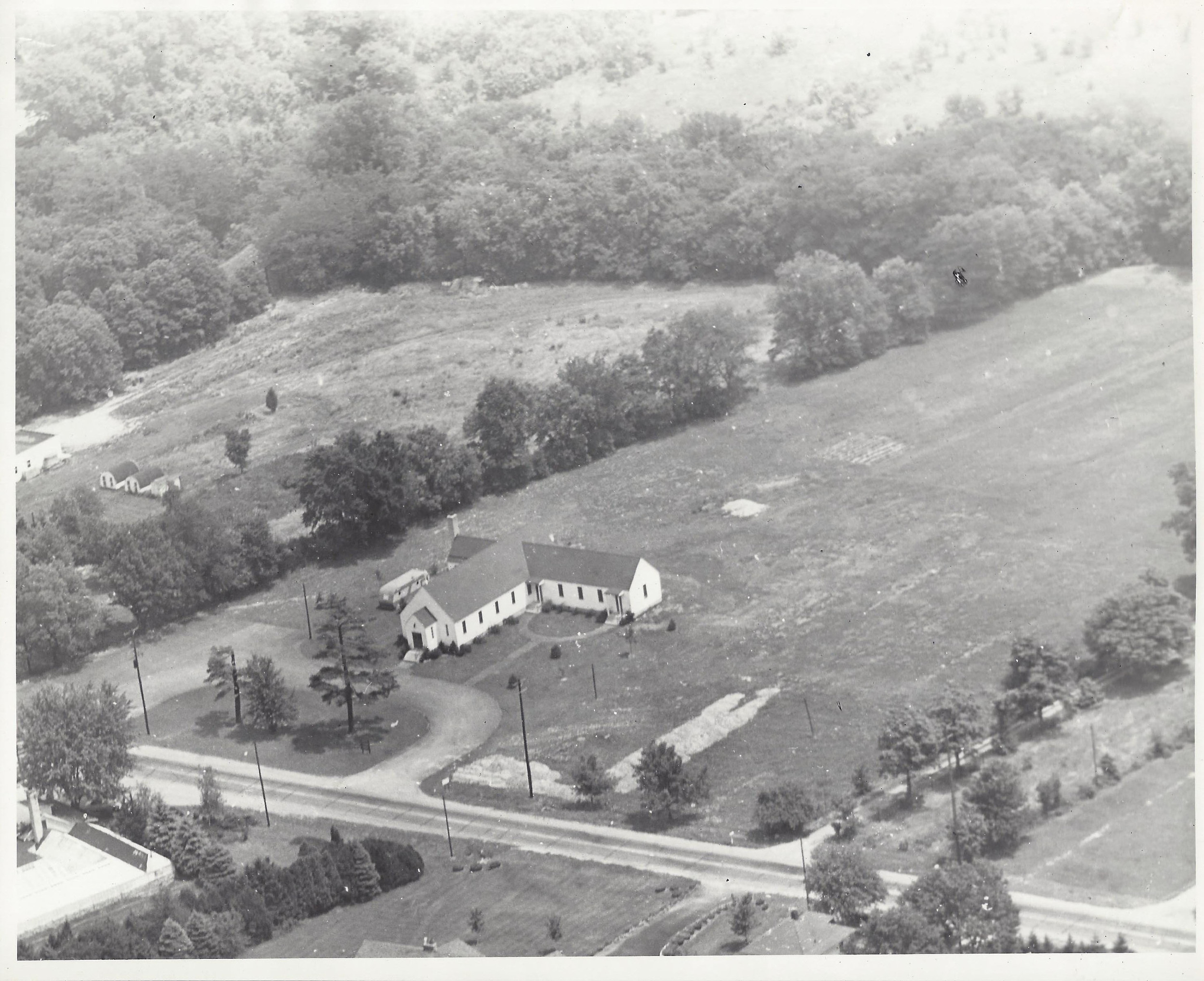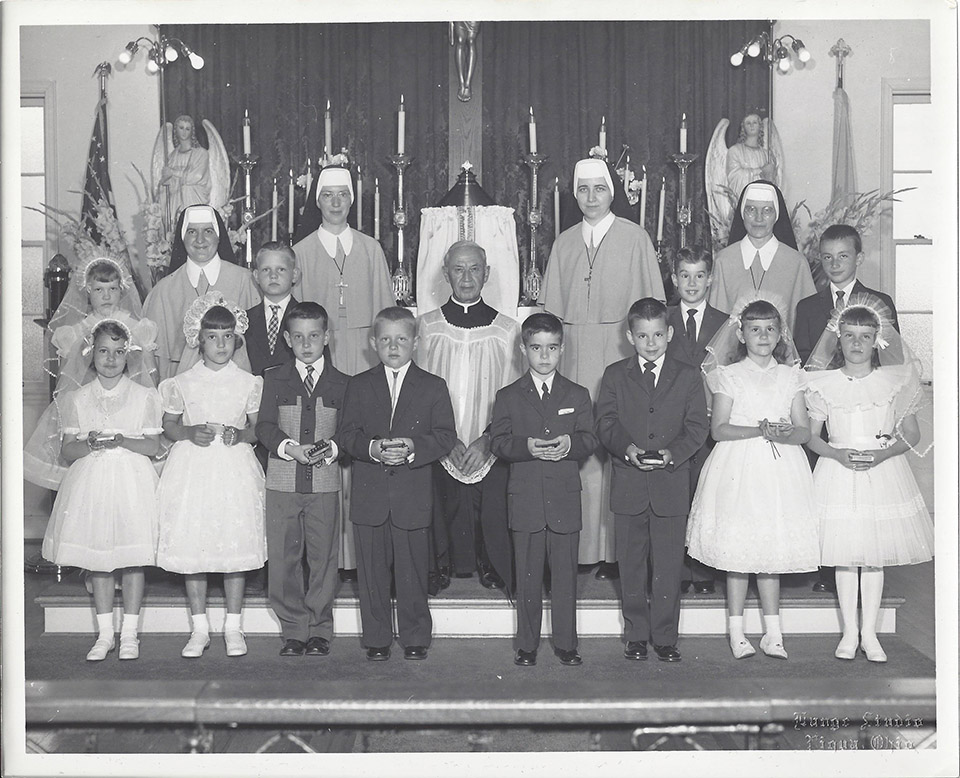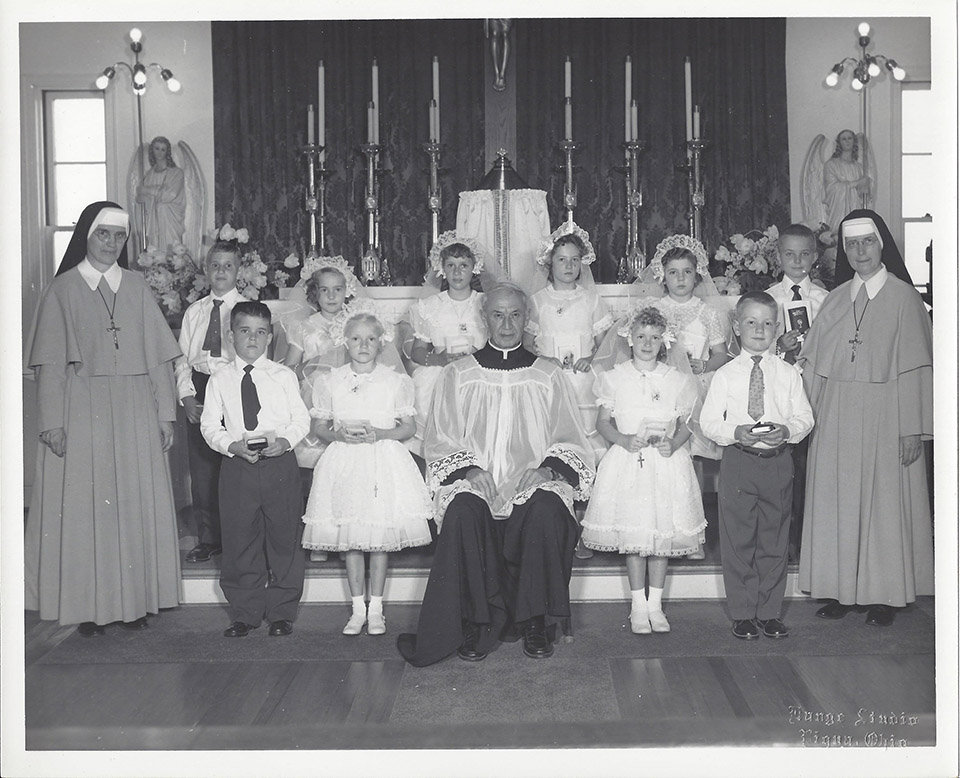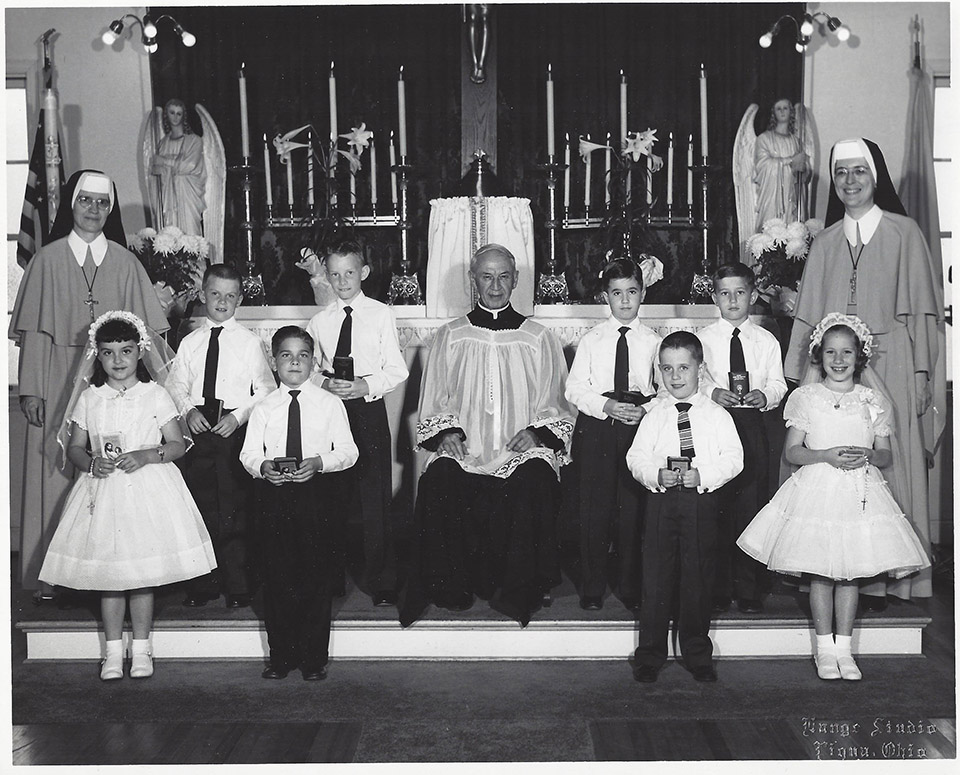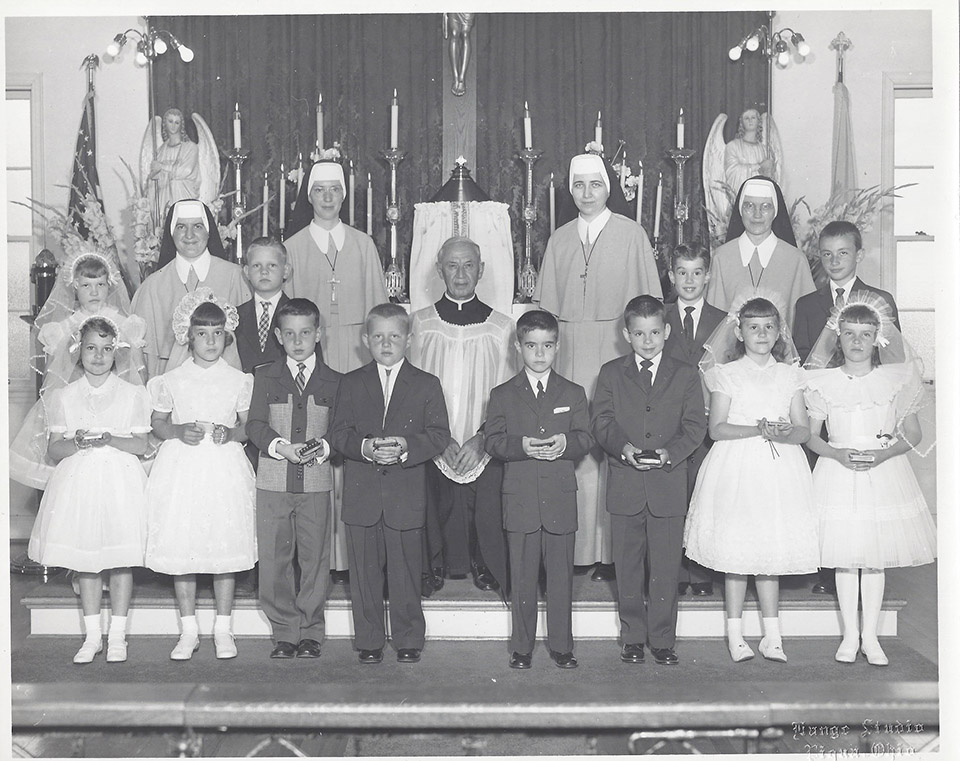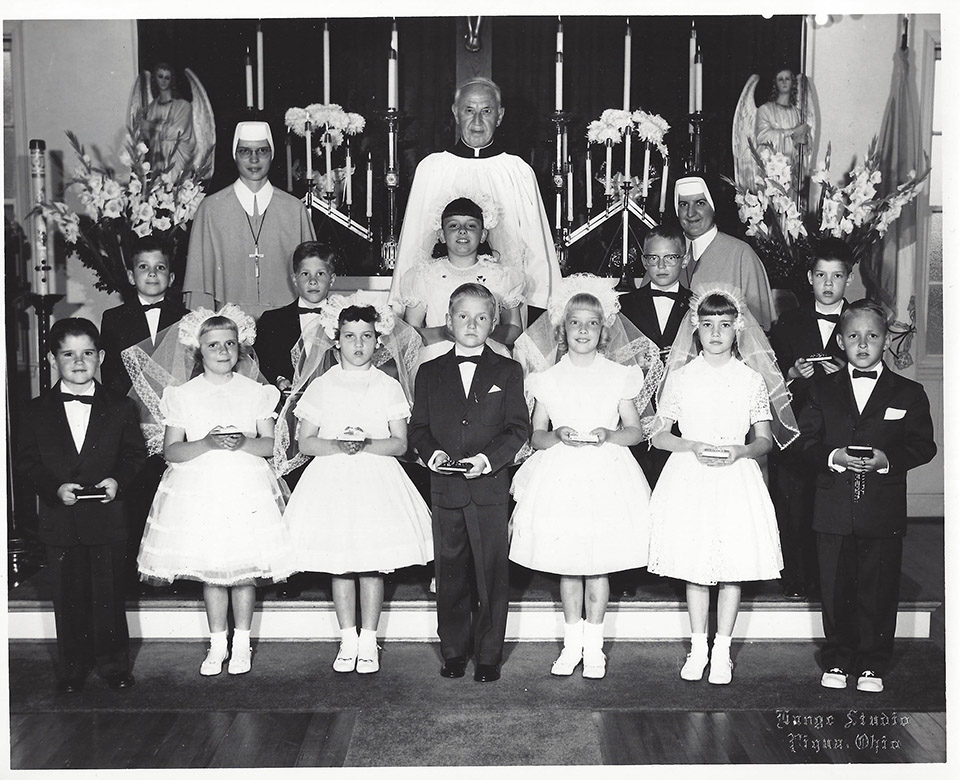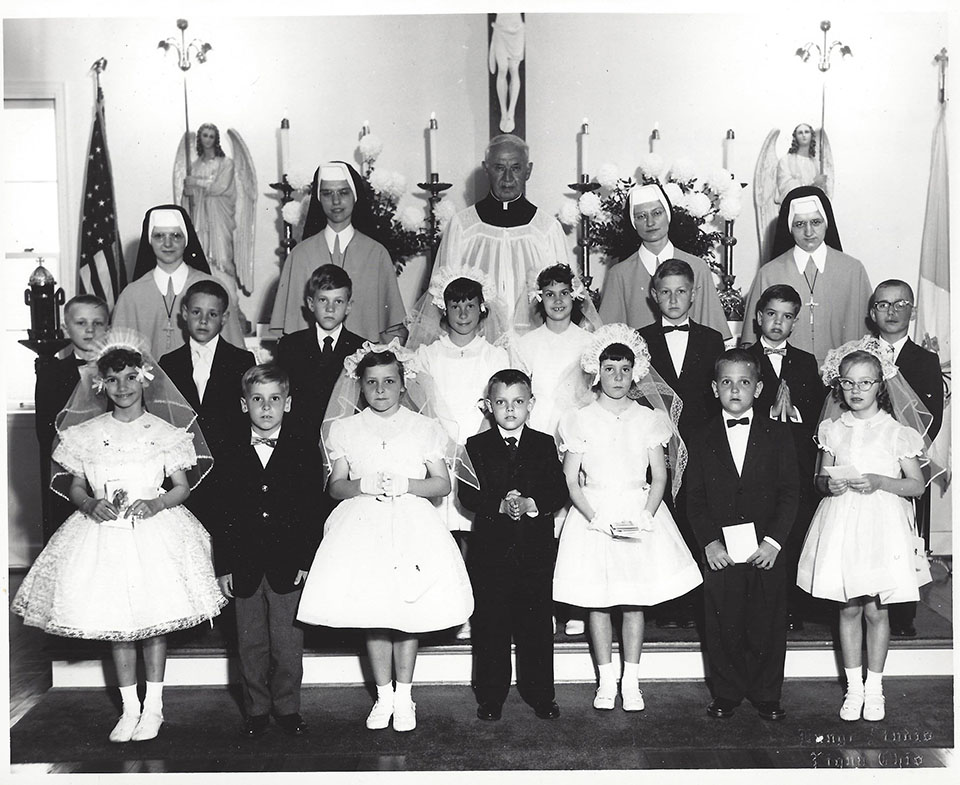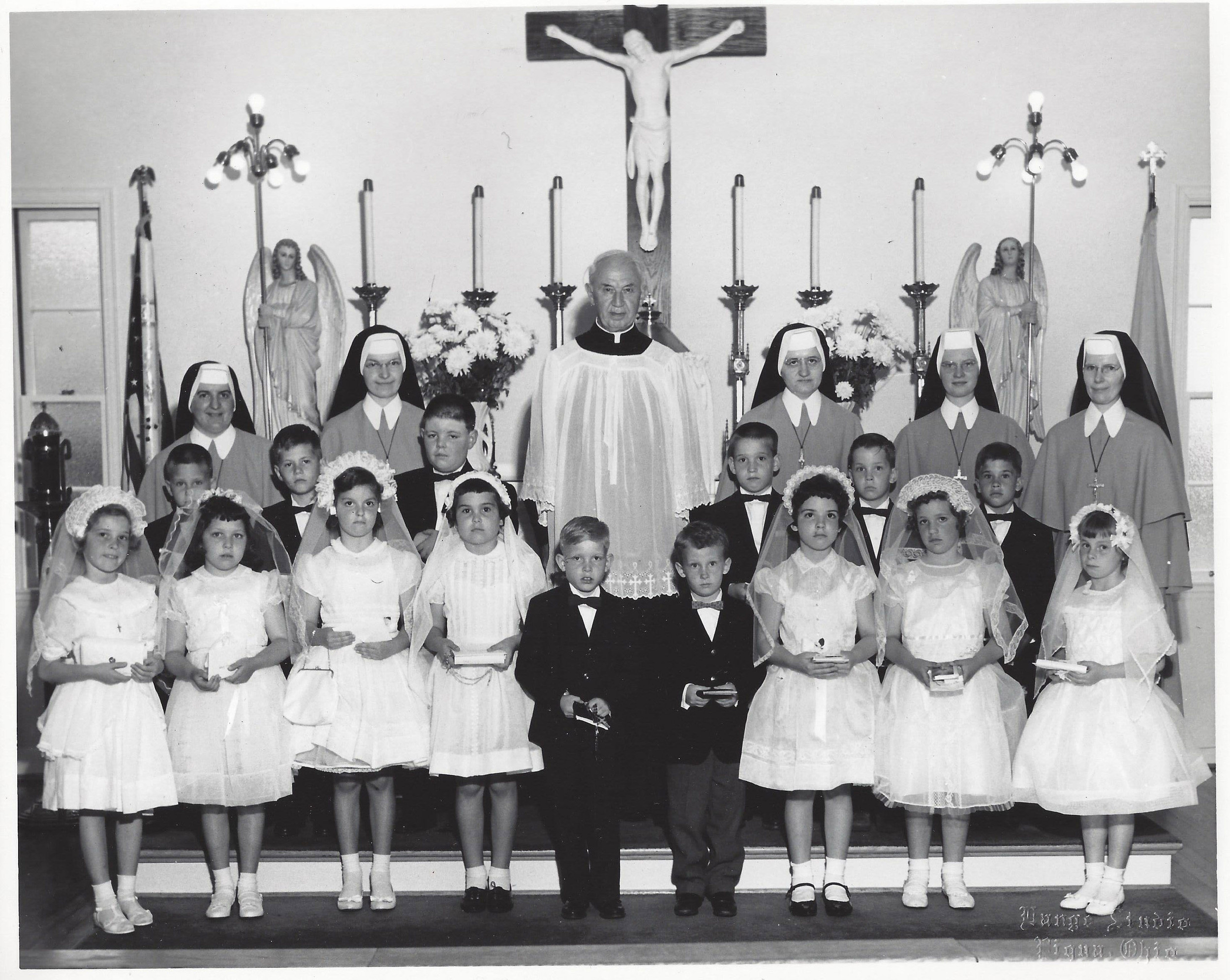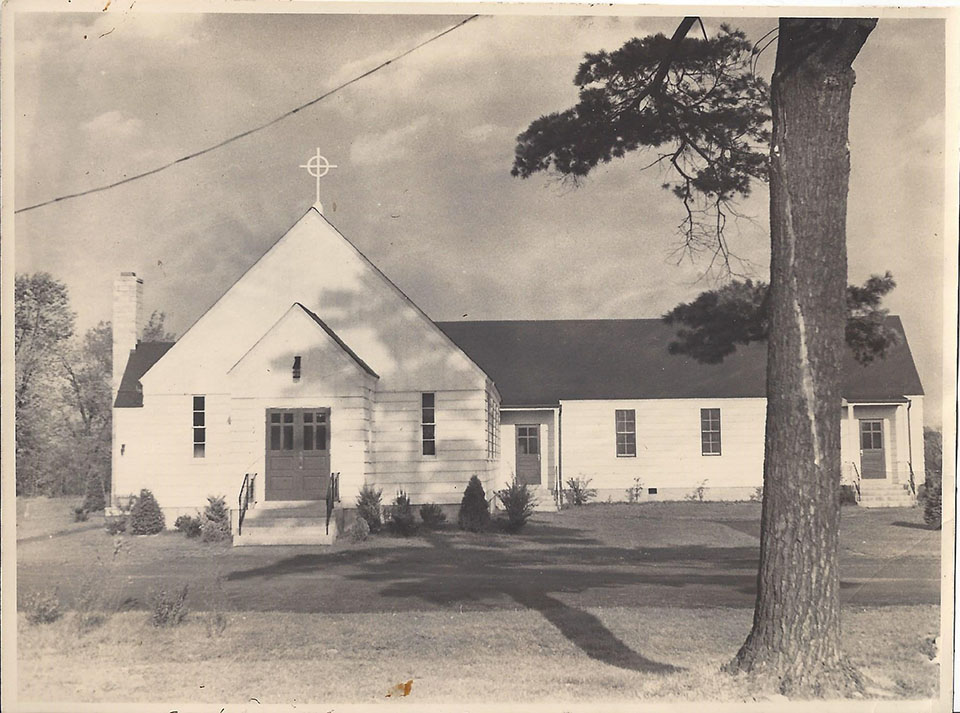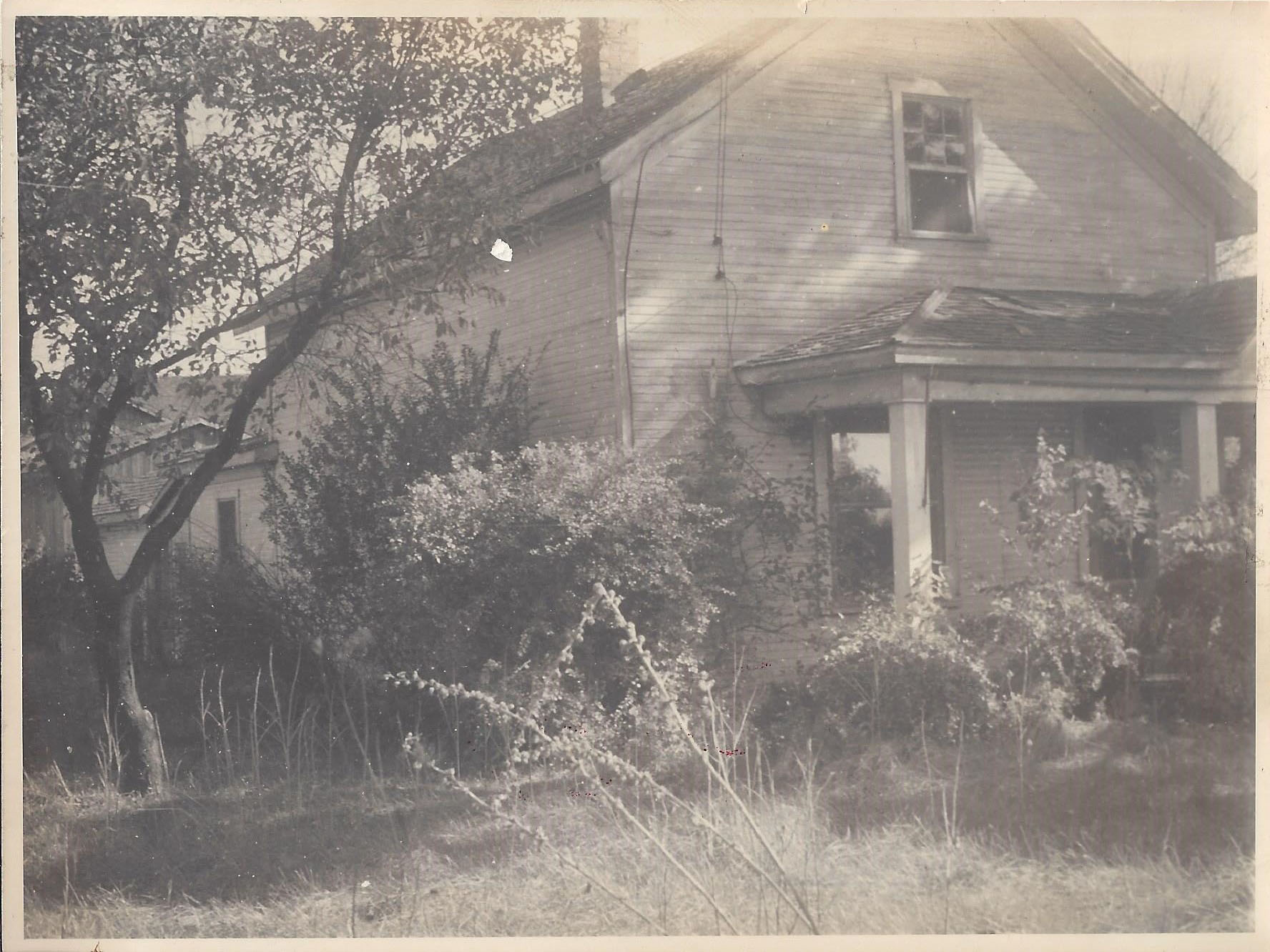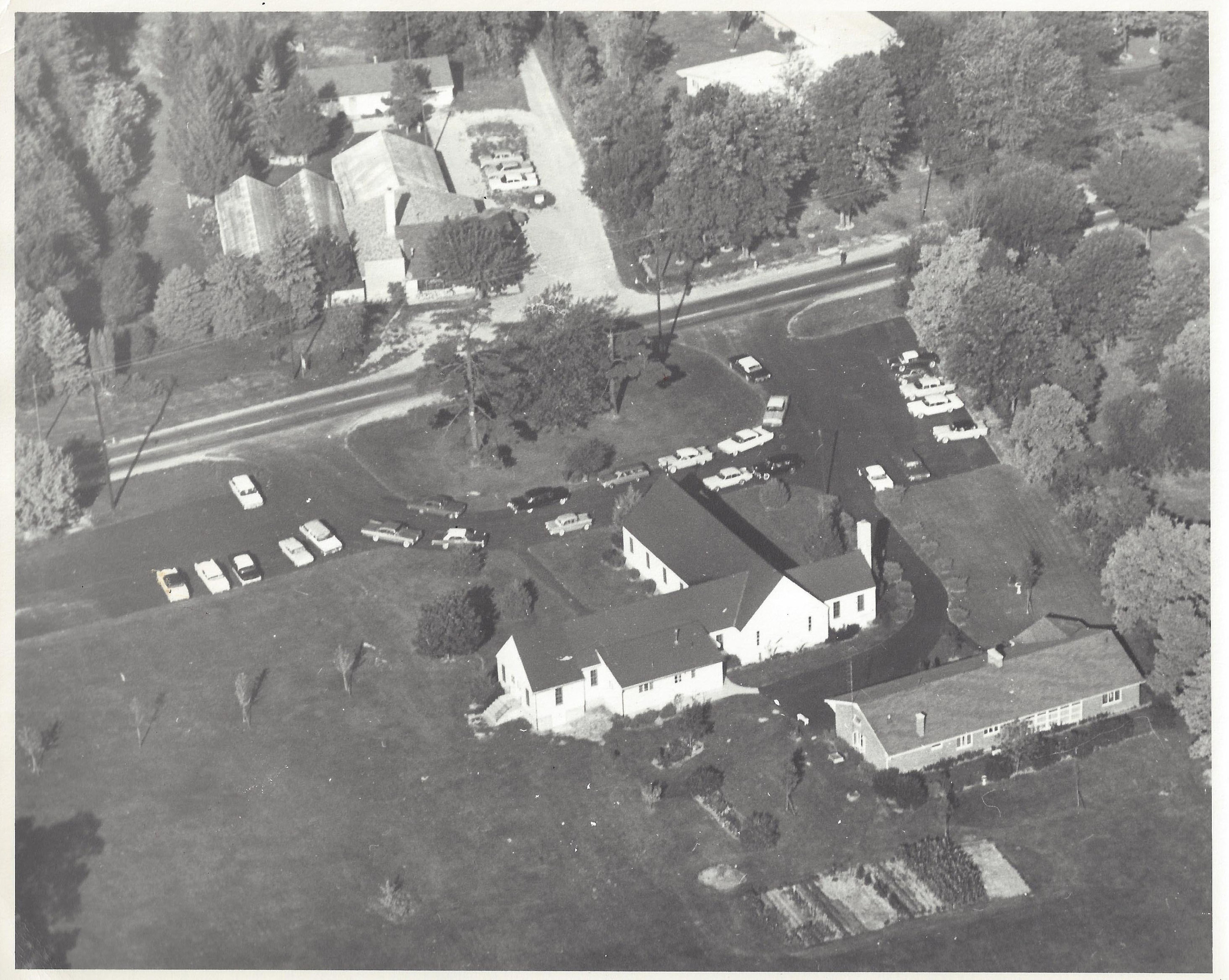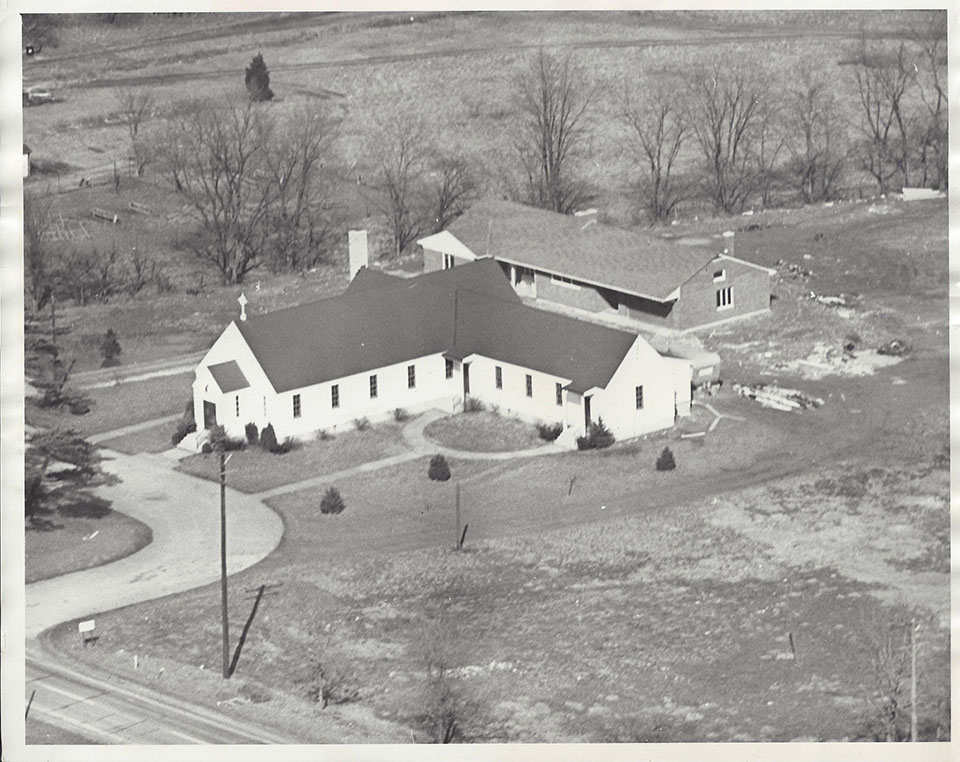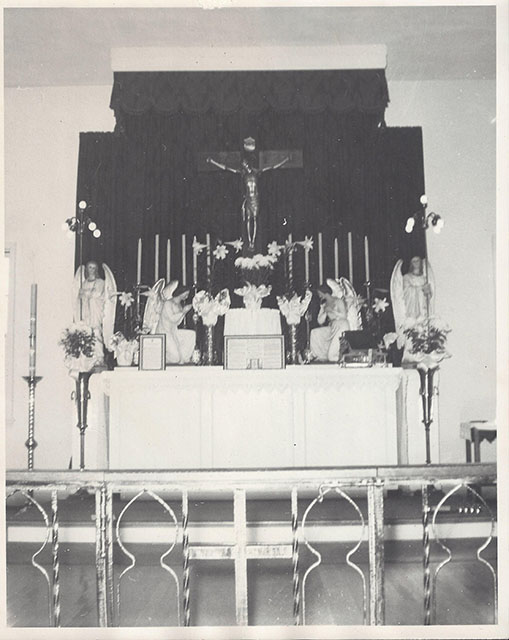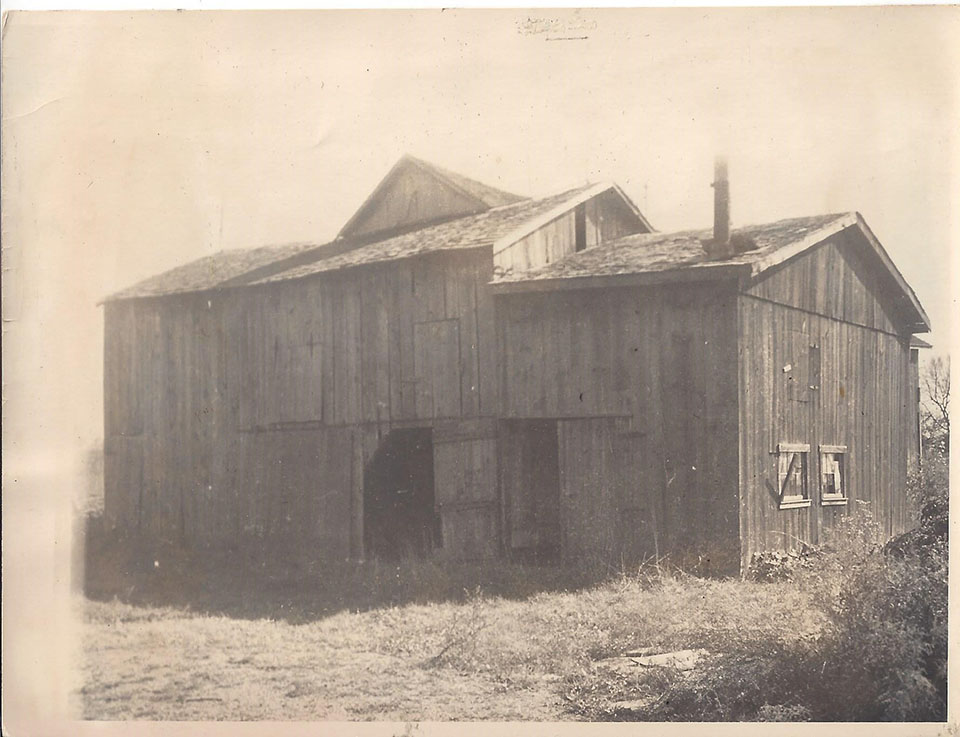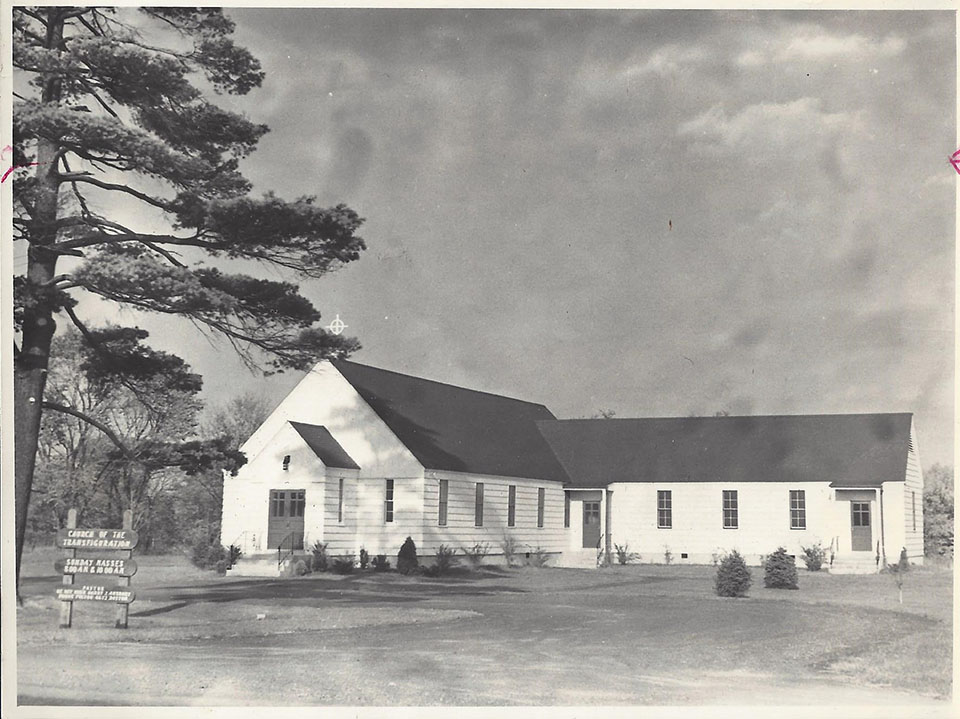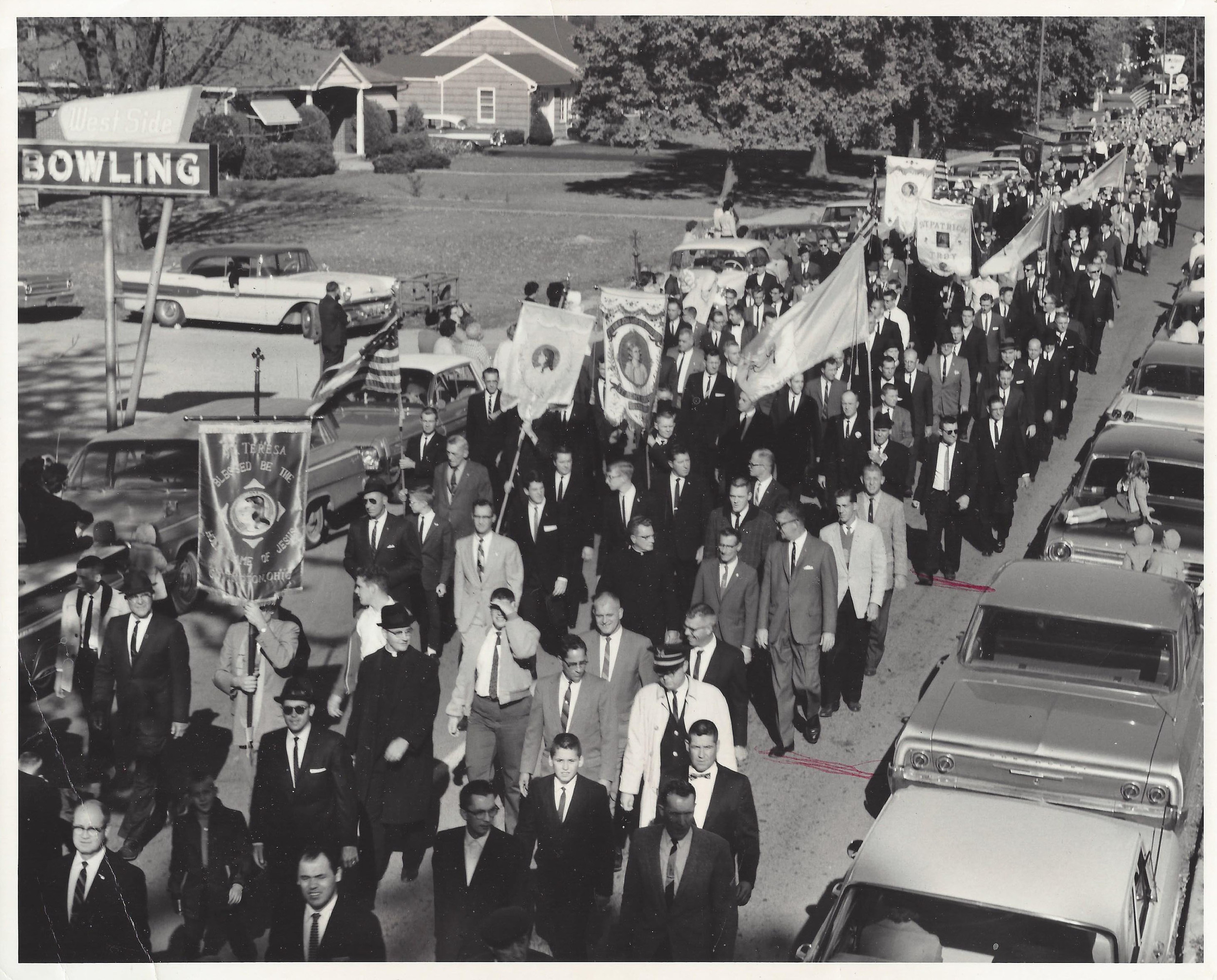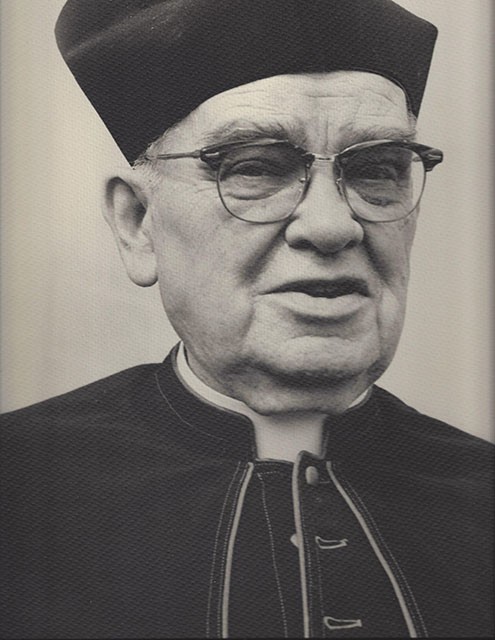Fifty Plus
A Story of Angels
This is a story of angels.
It’s a story of the parishioners of Corpus Christi Church in Dayton, who donated their entire Christmas collections of 1943 and 1944 -- $12,000 – to purchase land in West Milton for a mission chapel, believing in a dream and trusting that Christ would make it come true.
It’s a story of many devoted pastors and countless parishioners who gave of their time, talent and treasure. We can name all the pastors, but after 50+ years and so many angels in the pews sometimes we remember the deeds and the faces but struggle with the names. For their pardon we pray, knowing with God is their reward.
Fifty years of angels.
Fifty years ago, the Church of the Transfiguration of Our Lord was erected as a Mission Chapel on fifteen and a half acres at the south end of West Milton. A group of religious sisters had conducted a census for the Archdiocese of Cincinnati and discovered a need. They counted 72 Catholic families living near the new church site.
Because of local feeling against selling land to build a Catholic church, brothers Harry and Herb Busse engineered the purchase of the land for the ostensible purpose of using it as grazing pasture for Harry’s ponies. The ponies did indeed graze there until a small, dilapidated farmhouse and several farm buildings were torn down and construction started in September 1949. With a loan from the Archdiocese, a $43,240 building was finished and dedicated on Sunday, August 27, 1950.
At the dedication, the Most Reverend Bishop George Rehring of Cincinnati expressed hope that this mission church would be the source of “untold blessings,” and that this humble beginning would soon result in a complete parish, under the direction of a resident pastor.
Five hundred people attended the dedication. A glorious church was born.
Father Mike
Three months after the dedication, Mass at Transfiguration – along with Masses at most of the rural Catholic parishes – was canceled when a blizzard blew in and shut down the Dayton area. The Telephone Exchange was so swamped nobody could make a long-distance phone call to tell parishioners to stay home. Most of them probably knew anyway. The roads were impassable.
Monsignor Harry Ansbury, pastor of Corpus Christi parish, was appointed administrator in January 1949, and shuttled between Dayton and West Milton until October 1952, when Father Michael Hinssen became the first pastor of Transfiguration. Father Mike was a retired colonel in the Army chaplain corps and the chaplain at the Veterans Home in Dayton. Father Mike set up living quarters in a small trailer, bought with his own money, next to the new church until the rectory was finished in 1955. Margaret Coon lived at the rectory as housekeeper, cook and general listening ear. Over the next seven years, the church would add a wing with a kitchen and two additional rooms for extra catechetical space.
The parish had its first festival in 1952 on parish grounds. The next year the festival moved to Miller’s Grove where, unknown to the cooks, the electric roasters shorted out the electric system, leaving them with rather raw chicken to serve the noon diners. Joe, Katy, Frank and Irene Toth came to the rescue the third year, offering the use of their Hillside Manor facility south of West Milton for the parish festival. Even then the event had its memorable moments, such as the rain and windstorm that sent embroidered and sewn items from the fancy booth sailing toward the Stillwater River (and the parish men chasing after them). Then there was time Al Franz led the men in an unscripted contest to climb the poles of the main tent to retrieve the helium balloons that had floated to the top.
Father Mike gave 11 years of his life to Transfiguration parish until his untimely death, two days before Christmas, in 1963.
On January 15, 1964 Father Robert Plagge of Cincinnati became the second pastor of Transfiguration. He served two-and-a-half years but was relieved of his duties because of ill health in August 1966. When Father Francis Fritz became the third pastor of Transfiguration, the parish was outgrowing its existing facilities, with more growth expected. The church had been lifted beyond its humble beginnings just as Bishop Rehring had predicted at the dedication 16 years earlier.
A new era was about to begin.
A New Beginning
The first Parish Council was formed in January 1967 to aid in the overall administration of the church. A son of the parish, the Reverend Alfred Naseman, became a Precious Blood priest that year and offered his first Mass at Transfiguration on May 14, 1967. The Precious Blood sisters who had previously taught “catechism” classes for 2 ½ hours each Saturday morning, were replaced by adult volunteers in Transfiguration’s C.C.D. program.
By now it was apparent that the original church building could no longer house all that was going on within its walls. In December 1967, 166 parishioners pledged $114,399 toward construction of a new church building, one that would lead the new parish into the future. With another $70,000 saved and $150,000 borrowed, the cost would exceed $330,000, with many bumps along the way. The architect was dismissed because of rising costs and continuous delays, and the parishioners themselves had to finish the building. Persistent leaks in the flat roof would test the patience of future pastors and parishioners. The first Mass in the 575-seat church was offered April 11, 1971, Easter Sunday.
Father Wilfrid Dirr became the fourth pastor of Transfiguration on April 20, 1972, but he would be with the parishioners only until his sudden death the following year. Father Francis Pilliod served as administrator until Father George Klein was appointed the fifth pastor of Transfiguration parish on August 22, 1973. It was that year that the parish hosted the first Ecumenical Prayer Service in the history of Union Township. Thirteen ministers participated and more than 350 people attended.
By 1974, the parish had grown to 350 families – 1,100 total members. There were seven weddings in the church that year and 40 baptisms. The Athletic Club was formed, along with one of the area’s better softball teams. Even a ball diamond was developed that would be used by parish teams for eight years. The 1970s were a time of much activity in the parish, of ecumenical and spiritual enlightenment.
And, it has to be said; it was a time for mice.
At one of the annual parish festivals, Father Klein brought in some white mice from Wisconsin to entertain the crowds. The mice races were an attraction and a big hit, but what do you do with them when the festival is over? Put them in a pen in the garage, of course. However, apparently Father Klein knew more about growing a church than building a pen. The mice escaped and took to the rectory where, let’s just say, they were blessed with numerous offspring
Spaghetti, Pot Roast and Strudel
Father Klein was transferred to Holy Trinity Church in Middletown in October 1979, taking his white socks and Hawaiian shirts with him. He is fondly remembered, and not just for introducing white mice to the rectory. He spent six years at Transfiguration at a time of challenges and important decision-making. And like many of the pastors at Transfiguration, he led through an example of grace, love and commitment.
His successor, Father Charles Caserta (who declared war on the rectory mice), was known for his pastoral gifts, his kindness and his cooking. He made a mean spaghetti, pot roast and strudel. He had an awesome ability to remember names and liked to get up early to read the newspaper. One morning, as he fumbled with his coins to buy a paper outside the grocery store, a quarter dropped to the ground, bounced up and hit the door of the store, setting off the burglar alarm. The police responded quickly, only to find a surprised priest with an honest face buying a newspaper. Father Caserta was another of God’s angels. Even after retiring after 15 years as the sixth and longest-serving pastor of Transfiguration, he taught 11th and 12th graders at the parish.
The 1980s were a time of some financial stress for Transfiguration. Parishioners were still paying on the debt for the new building and the bills were piling up. The flat roof was developing leaks faster than all-round maintenance man Ed Brinkel could repair them. After seeing the first utility bill, Father Caserta moved the weekday Mass into the rectory chapel.
Father Caserta asked parishioners to put a little extra in their Sunday envelopes in lieu of the parish festival. Parishioners rose to the challenge and the debt was retired in 1989. When Father Caserta inherited property after his mother’s death, he donated most of the proceeds of its sale to the parish.
The parish festival was retired, but the men`s Holy Name Society instituted fish fries so Al Franz could keep his dishpan hands. The Rosary-Altar ladies showcased their culinary talents and heavenly desserts at the annual Mother-Daughter Banquet. A married couples’ group, Living Matrimony, was begun to strengthen marriages. On the spiritual side, Father Caserta instituted weekly Eucharistic Adoration and Benediction, which has brought the parish many blessings. For several years, Father Caserta and two different Lutheran pastors held a common Ash Wednesday service at Transfiguration, and parishioners from Transfiguration and Good Shepherd Lutheran gathered in an ecumenical study group to discuss what united and what divided us as Christians.
A Reverend Doctor
Father Caserta retired in June 1994, returning periodically to help with Masses. The new pastor, Father Thomas Grilliot, had a Ph.D. in mathematics and had taught at Penn State University before entering the seminary. Old university colleagues at first mystified the parish secretary by calling to ask for Dr. Grilliot.
Father Grilliot reactivated the Parish Council and, because of increased daily Mass attendance, moved the Masses back into the church. Parishioners knew Father Grilliot for his dry sense of humor. What many did not know was his special care for the poor and mentally handicapped.
Father Grilliot’s tenure at Transfiguration saw fascia trim installed on the outside of the church building, which solved the worst of the leaks along the church walls. In 1996, the parish hired its first youth minister, Ruth Matthiass and Father Grilliot received approval from the archdiocese for a much-needed expansion project that resulted in the Mother Teresa annex.
Father Caserta had overseen the first Divine Mercy Sunday celebration the Sunday after Easter and the installation of the Divine Mercy picture of Jesus. Father Grilliot continued that devotion and approved the Schoenstatt devotions begun by a group of parishioners to strengthen our families. A picture of the Schoenstatt Madonna and Child was installed in the sanctuary. A group of parishioners gathered under the name Shepherds of Christ to pray for vocations to the priesthood.
The parish celebrated the first Mass of Father Ken Hummel on May 31, 1998. Also, in 1998, the parish celebrated the religious profession of Sister Mary Brigid McCabe with the Handmaids of Christ. In March of 1999, former youth minister Ruth Matthiass became Sister Clare Marie of the Cross with the Franciscan Sisters of the Renewal. Once again young parishioners are actively discerning religious vocations.
An Inheritance
On April 16, 1997, 93-year-old Kathryn Lange died and left the parish a considerable legacy in her will. Kathryn served as a Red Cross volunteer during World War II and spent many years raising purebred collies on the 168-acre property she and her late husband owned at 3505 Calumet Road. Kathryn loved her faith and left Transfiguration $50,000 outright.
Kathryn’s also left the parish a trust, consisting of her property and stocks valued at $6.4 million. Her 14-page will stipulated that the property be maintained as a nature preserve and the buildings used “as a home for retired members of the Roman Catholic Church or as a religious retreat house or for similar purposes.”
Kathryn’s gift presented many challenges for the parish, as Father Grilliot recounted in a December 23, 1998, update on the status of the estate. The parish had just received its first distribution from the trust: $476,039. The estate buildings badly needed repairs. Where to start? How to carry out Kathryn’s wishes as expressed in her will?
Father Grilliot worried that having money can destroy the community of a parish. “How will this money directly affect our parish? Morally and legally we should focus on the intent of the will,” Father Grilliot wrote. “The trust money we received is meant to carry out the desires mentioned in the will. Those desires did not include direct aid to the parish. However, the parish may receive indirect benefit.”
One indirect benefit was the re-appearance of the adoration angels that stood on either side of the tabernacle in the first church. Kathryn had been storing them at her house! Her heirs auctioned them off with all of Kathryn religious art, giving parishioners Charlie and Norma Parmenter the opportunity to buy and donate them to the parish. That prompted parishioner Barbara Bare to ask if the parish would like the Infant of Prague statue that had been in the old church.
The angels now stand guard around the tabernacle in the new church. Several parishioners restored the Infant of Prague to its former glory and Father Grilliot suggested a new use: a novena and an annual commemoration of the unborn. The statue reminds parish children that Jesus was once a child like them.
Father John MacQuarrie became the eighth pastor of Transfiguration in July 1999. He follows seven dedicated shepherds who built a church from the ground up and provided inspiration, grace and leadership to help it grow.
Under Fr. John’s leadership, and with the advice of a consulting board, improvements continued at the Lange Estate, which formally became the Transfiguration Center for Spiritual Renewal. Melchisedek Village was constructed to house 10 retired priests in five duplexes. In addition, Tabor Lodge, with the adjoining St. Catherine’s chapel, kitchen and hospitality room, provided rooms for archdiocesan priests needing a place for a short retreat.
The estate now includes an equipment barn with office and restrooms and a picnic shelter with tables for 60. Marked trails and an observation platform allow nature lovers to explore meadows, woods and the embankment of the Stillwater River. A buffer strip was purchased from the property to the west to preserve the retired priests’ privacy. Later the entire adjoining property was purchased by Bruckner Nature Center, extending the peace and quiet of the estate and guaranteeing no commercial development.
During Fr. John’s tenure the parish would experience two more religious vocations, with Fr. Kevin McCabe ordained to the priesthood on May 18, 2003, and the former Katy Sparke taking final vows on May 29, 2014 with the Sisters of the Society of Our Lady of the Most Holy Trinity. Anthony Manno came as a single man to be our next youth minister and left several years later as a married man with a growing family. His replacement was the married couple of Danny and Michele Schneible.
Transfiguration is known as a devotional parish, and under Fr. John that came to include a special vigil for the double feasts of the Immaculate Heart of Mary and the Sacred Heart of Jesus. Transfiguration provided the template for other area parishes in celebrating Divine Mercy Sunday, the Sunday after Easter, with special devotions and prayers.
Under Fr. John the technological improvements in the parish office included a computer server that connected all the office computers and Fr. John’s computer, a boon to the secretary who no longer had to retype the Pastor’s Corner. It would take a new pastor to initiate an improved church website.
Fr. John is Transfiguration’s longest serving pastor to date. On July 1, 2014 the archbishop called upon him to take over St. Bernard’s in Springfield as well as become pastor at St. Teresa’s the following year. In his place Transfiguration welcomed Fr. Eric Bowman. Fr. John had warned the parish that Fr. Eric would be a blast of fresh air and a surprise. The surprise was going from a pastor of medium height to a giant standing 6’7” with a personality to match. The fresh air was homilies that woke up the parishioners even in the farthest back pews. Fr. Eric had no problem chiding those who were not Buckeye fans or picking on persons by name.
Churches can’t just expand on the outside; they must grow from within. That first $12,000 bought a building, but it didn’t buy a church. That took Transfiguration’s pastors and its parishioners, a few of them named in this story, most of them anonymous. Their story is one of love. It’s a story of angels.
